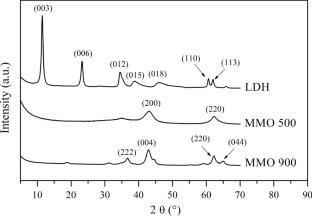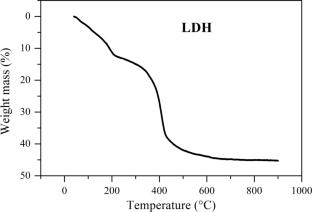Mixed metal oxides derived from carbonate intercalated Mg−Al layered double hydroxide: role of the calcination on modifying the optical, electrical and dielectric properties
Abstract
This work focuses on a comparative study of the electrical, dielectric and optical properties of a layered double hydroxide (LDH) and its mixed metal oxide derivatives (MMOs). The LDH precursor was synthesized by intercalation of carbonate ions, while the MMOs were prepared by calcining LDH at 500 and 900 °C, designated MMO 500 and MMO 900, respectively. LDH and its two derived MMOs were characterized by X-ray diffraction and thermogravimetric analysis, and analyzed by two spectroscopic techniques: diffuse reflectance and impedance spectroscopy. It was found that the structural refinement of MMO 900 by the Rietveld method revealed the presence of a majority magnesium oxide phase and a significant percentage of MgAl2O4 spinel. The analysis of the electrical response of the materials leads to the establishment of an equivalent electrical circuit, the parameters of which are reported and discussed. It was found the role of calcination on decreasing the electrical conductivity, dielectric constant and improving the dielectric properties by reducing the dielectric energy dissipation. However, the calcination of the LDH precursor does not result in enhanced light absorption but rather facilitates improvements in light reflection and dielectric behavior. The results of this study indicate that MMO 900 has potential applications in developing innovative dielectric reflective materials.



 求助内容:
求助内容: 应助结果提醒方式:
应助结果提醒方式:


